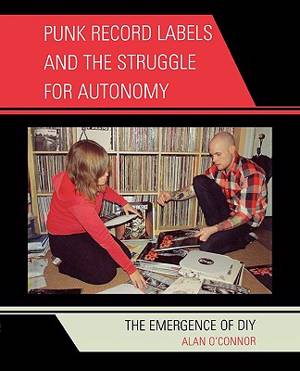
- Afhalen na 1 uur in een winkel met voorraad
- Gratis thuislevering in België vanaf € 30
- Ruim aanbod met 7 miljoen producten
- Afhalen na 1 uur in een winkel met voorraad
- Gratis thuislevering in België vanaf € 30
- Ruim aanbod met 7 miljoen producten
Zoeken
€ 191,95
+ 383 punten
Uitvoering
Omschrijving
This book describes the emergence of DIY punk record labels in the early 1980s. Based on interviews with sixty-one labels, including four in Spain and four in Canada, it describes the social background of those who run these labels. Especially interesting are those operated by dropouts from the middle class. Other respected older labels are often run by people with upper middle-class backgrounds. A third group of labels are operated by working-class and lower middle-class punks who take a serious attitude to the work.
Using the ideas of French sociologist Pierre Bourdieu, this book shows how the field of record labels operates. The choice of independent or corporate distribution is a major dilemma. Other tensions are about signing contracts with bands, expecting extensive touring, and using professional promotion. There are often rivalries between big and small labels over bands that have become popular and have to decide whether to move to a more commercial record label.
Unlike approaches to punk that consider it as subcultural style, this book breaks new ground by describing punk as a social activity. One of the surprising findings is how many parents actually support their children's participation in the scene. Rather than attempting to define punk as resistance or as commercial culture, this book shows the dilemmas that actual punks struggle with as they attempt to live up to what the scene means for them.
Using the ideas of French sociologist Pierre Bourdieu, this book shows how the field of record labels operates. The choice of independent or corporate distribution is a major dilemma. Other tensions are about signing contracts with bands, expecting extensive touring, and using professional promotion. There are often rivalries between big and small labels over bands that have become popular and have to decide whether to move to a more commercial record label.
Unlike approaches to punk that consider it as subcultural style, this book breaks new ground by describing punk as a social activity. One of the surprising findings is how many parents actually support their children's participation in the scene. Rather than attempting to define punk as resistance or as commercial culture, this book shows the dilemmas that actual punks struggle with as they attempt to live up to what the scene means for them.
Specificaties
Betrokkenen
- Auteur(s):
- Uitgeverij:
Inhoud
- Aantal bladzijden:
- 158
- Taal:
- Engels
- Reeks:
Eigenschappen
- Productcode (EAN):
- 9780739126592
- Verschijningsdatum:
- 1/05/2008
- Uitvoering:
- Paperback
- Formaat:
- Trade paperback (VS)
- Afmetingen:
- 162 mm x 228 mm
- Gewicht:
- 362 g

Alleen bij Standaard Boekhandel
+ 383 punten op je klantenkaart van Standaard Boekhandel
Beoordelingen
We publiceren alleen reviews die voldoen aan de voorwaarden voor reviews. Bekijk onze voorwaarden voor reviews.











